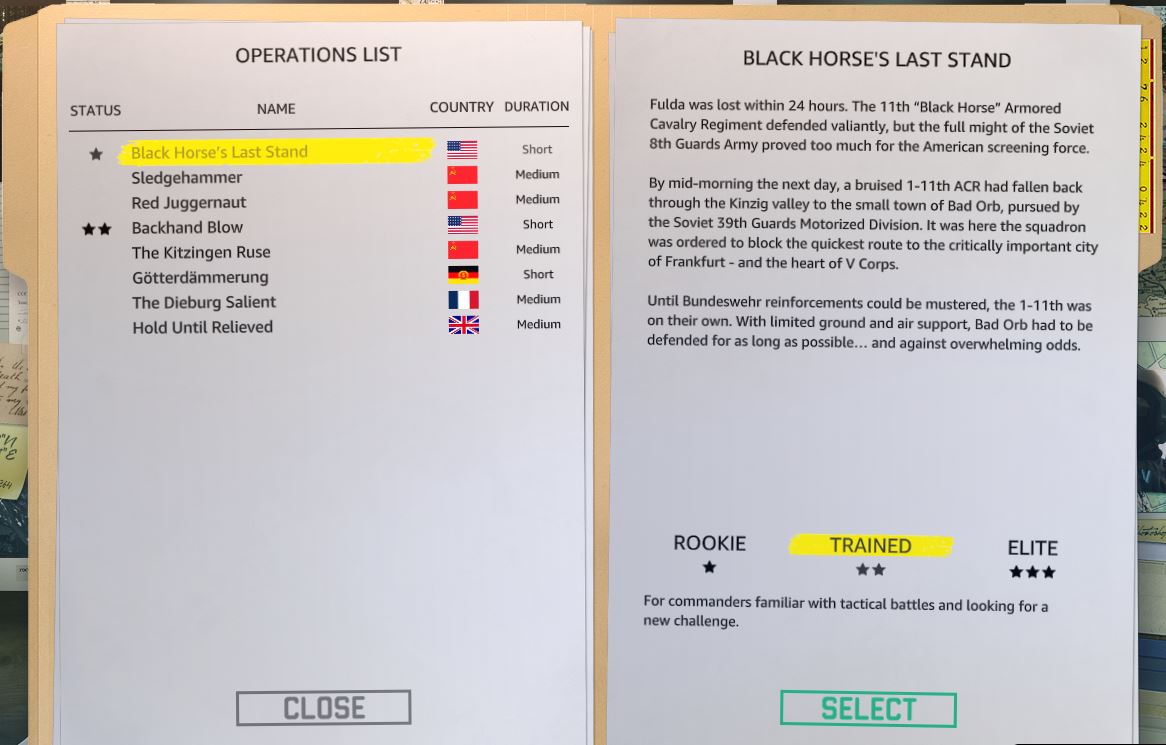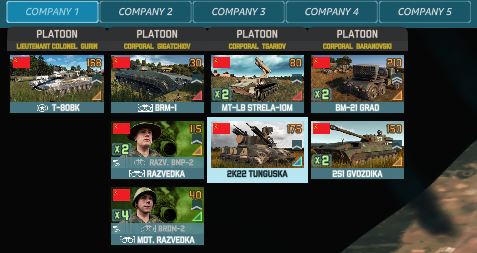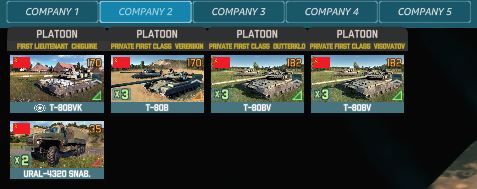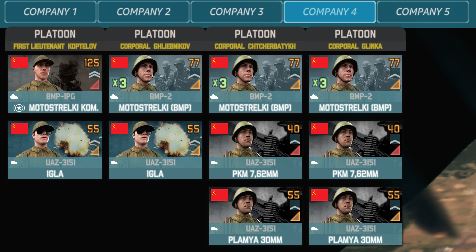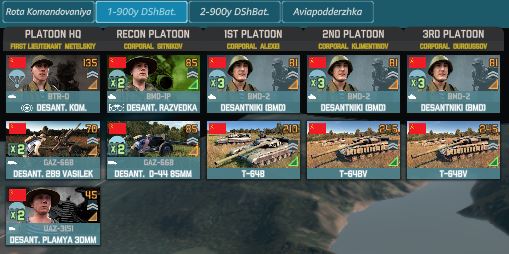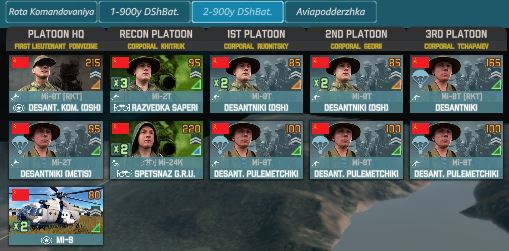Each country’s Battle Group Deck is modified to represent a division or Brigade Table of Organization and Equipment (TO&E), Multiplayer games represent Corp or Army Operational Level engagements. The numerical values of unit packs are modeled using military reference sources to model as accurately the warfighting capability of the respective armies.
The campaign simulation timer begins in 1975, the year most likely the Russians would have decided to launch an attack against NATO forces in Europe. Due to their estimates of low US morale and numerical troop strength in Europe after the Vietnam war. The simulation models the political scenario in which STAVKA is given permission to begin planning an attack against the NATO force in West Germany in 1975, the chance of a Russian attack across the Fulda gap diminishes every year by approximately seven percent (~7.143%) until 1989 when a general withdrawal of Soviet forces in east Germany is announced and the reunification of Germany begins.
The named locations listed represent peacetime barracks positions. Prior to hostilities, all units would deploy according to their wartime General Defense Plan (GDP). There were three wartime scenarios that affect settings for multiplayer or campaign games. The first was a Warsaw Pact attack directly out of their barracks locations with only a few days of preparation, depending on strategic surprise, NATO would have had about 48 to 72 hours' warning. This was the scenario NATO feared the most. The second, and most likely, was a 7 to10 day warning with REFORGER units moving into place and the Soviets mobilizing for 2 to 3 weeks. The last scenario models a full deployment for both sides. With a nuclear exchange being a high probability in the 11th and 13th pre-generated campaign scenarios.
There are other game simulation modifications factors, which affect the general disposition of forces and their deployments, the campaign simulation models the engagement scenario where the soviets are launching an assault with no warning from their station areas through the Erfurt-Eisenach region, this corridor, which begins at the gap between to mountain basins opens into a wide grassy region of farmland that crosses the Border into the Phillipstal-Rasdorf sector (the sector of the American 11th Armored Calvary Regiment and the 2nd Panzer Grenadier Division). From there it runs west to the gap between the Vogelsberg and the highlands north of the Autobahn.
The broad corridor that begins at that gap and runs astride the autobahn all the way to Frankfurt and the Rhine is known specifically as the Wetterau Corridor. When you reflect on the last month of World War II you will recognize that the Wetterau Corridor and what we now know as the Fulda Gap served as the main avenue for the drive of the Third U.S. Army from its Rhine bridgehead near Frankfurt onward to Leipzig and the heart of Germany. (At one point in April 1945 Third Army HQ was in Hersfeld.).
Steam Workshop::The Fulda Gap 1989: The Battle for the Center (steamcommunity.com)
Operation 1. Black Horse's Last Stand showcases the formation of an Armored Calvary Reconnaissance Troop, 1-11 ACR, of the 11th Armored Calvary Regiment composed of 8 M1A1 Abrams (ACAV) tanks including (1) HQ tanks, as well as a mechanized infantry company, with two M1025 TOW HMWVV. The Calvary Mechanized Scout Platoon is also equipped for anti-tank warfare, armed with M72 LAW rocket launchers.
Operation 2. Sledgehammer showcases the formation of a WARSAW PACT Russian Engineer Company with Flame Thrower Tank support.
Operation 3. Red Juggernaut showcases the formation of a WARSAW PACT Russian Tank Company with Mechanized Infantry support.
Operation 4. Backhand Blow showcases the formation of a Battalion Combat Team (Yankee or Bravo), which is a typical U.S. Army combat team like 2-32 Armored Battalion, of the 3rd Armored Division composed of fourteen M1A1 Abrams tanks including (2) HQ tanks, as well as a mechanized infantry company, with two M901 ITV TOW missile vehicles, an M728 CEV. The Mechanized Platoon is also equipped for anti-tank warfare, armed with M47 Dragon anti-tank missiles and M72 LAW rocket launchers.
When deployed as a Task Force 3-32 of the Armored Battalion, may select to form a tank-heavy (two tank, one mechanized platoons), infantry-heavy (one tank, two mechanized platoons), or balanced (two tank, two mechanized platoons) Combat Team, the mechanized infantry company, can also be mixed with elements of the 4-7 Calvary Squadron and deploy a M981 FISTV-equipped artillery team.
Operation 5. The Kitzingen Ruse operation showcases the VDV (Vozdushno-Desantnye Voyska, or Soviet Airborne Forces) players command a VDV Mechanized (IFV) Infantry company, supported by a VDV Helicopter deployed Air Assault Infantry Company, with assault helicopter support.
Operation 8 Hold The Line Operation modified to incorporate the British Tank Squadron of the Royal Scots Dragoon Guards, 7th (UK) Armored Brigade, 1st (UK) Armored Division.

The Fulda Gap 1989: The Battle for the Center
FeatureRedesign of the Black Horse's Last Stand operations scenario to permit the formation of an Armored Calvary Reconnaissance Troop, 1-11 ACR, of the 11th...






